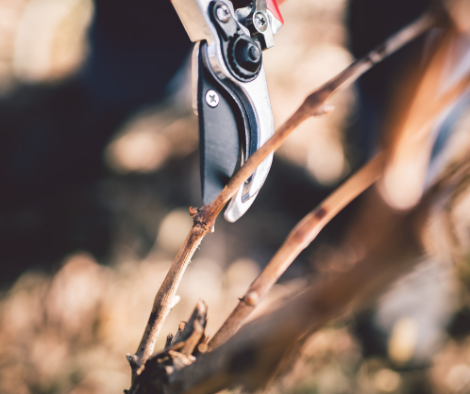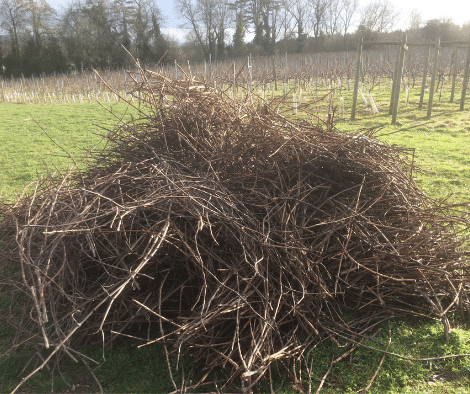For many, January has become a month that they try and see the back of – with dry January and the bank balance attempting to perform a regain after spending more than usual in December. Unsurprisingly as a drinks producer, this is not my mind set and instead, January is a month about planning and setting goals for the year.
The vineyard is no different and there are plenty of tasks to be getting on with such as pruning, fixing trellising, accounting for missing vines and correcting nutrients in the soil. My focus is currently on soil health and ensuring that the correct balances are present in the soil. This is carried out by taking soil samples around the vineyard and sending those samples off to the laboratory to get them tested for any deficiencies.

I have also been fixing trellising – in the vineyard I manage, it’s a mix of wood and stainless steel posts and unfortunately, where you have wood, you will eventually have failure. Wooden end posts will tend to break after around a decade or so in the ground. When they do it’s a good idea to replace these posts with stainless steel posts.
We’re also very fortunate at Renishaw Hall vineyard to have Gripple as a local Sheffield company, so getting hold of anchor systems such as theirs is straightforward. They are also incredibly easy to install.
I am waiting as late as possible to prune this year, as I want the sap to be rising in the vine. This tends to lead to fewer incidences of disease in the vines and also allows for the longest dormancy possible that should then lead to a delayed budburst, therefore lowering the chances of frost damage to new buds.

I will also be adjusting my approach to pruning this year and will be looking at employing the principles of the Guyot-poussard system. As you tackle pruning this year, it’s worth reminding yourself of the following:
• Large pruning wounds leave a possible gateway for disease into the vine and should be avoided as much as possible. Try to prune as the sap is rising so that the sap can help to heal the wound as it happens, this also helps to halt any ingress of disease.
• Any wound on the vine will cause dieback on the vine by around 1.5 times the size of the cut, therefore pruning cuts should be made with this in mind so that some wood is left as a buffer. This dieback can halt the progress of the sap and can cause areas of the vine to die, resulting in a less fruitful vine.
• It’s best practice to take fruiting arms from the opposite side of the crown for double guyot as much as possible to encourage sap flow throughout the vine. If growing for single guyot then adopt the same approach with the spur.
Please keep an eye out for more wine content coming to blog throughout February.
If you would like to discuss your own winemaking process and prepare for the year ahead, you can email Kieron at kieron.atkinson@murphyandson.co.uk
To view and shop our wine making store, please click here. We have an extensive range of MLF, Enzymes, Yeast and Inactivated yeasts and more to help you get from soil to cellar.

